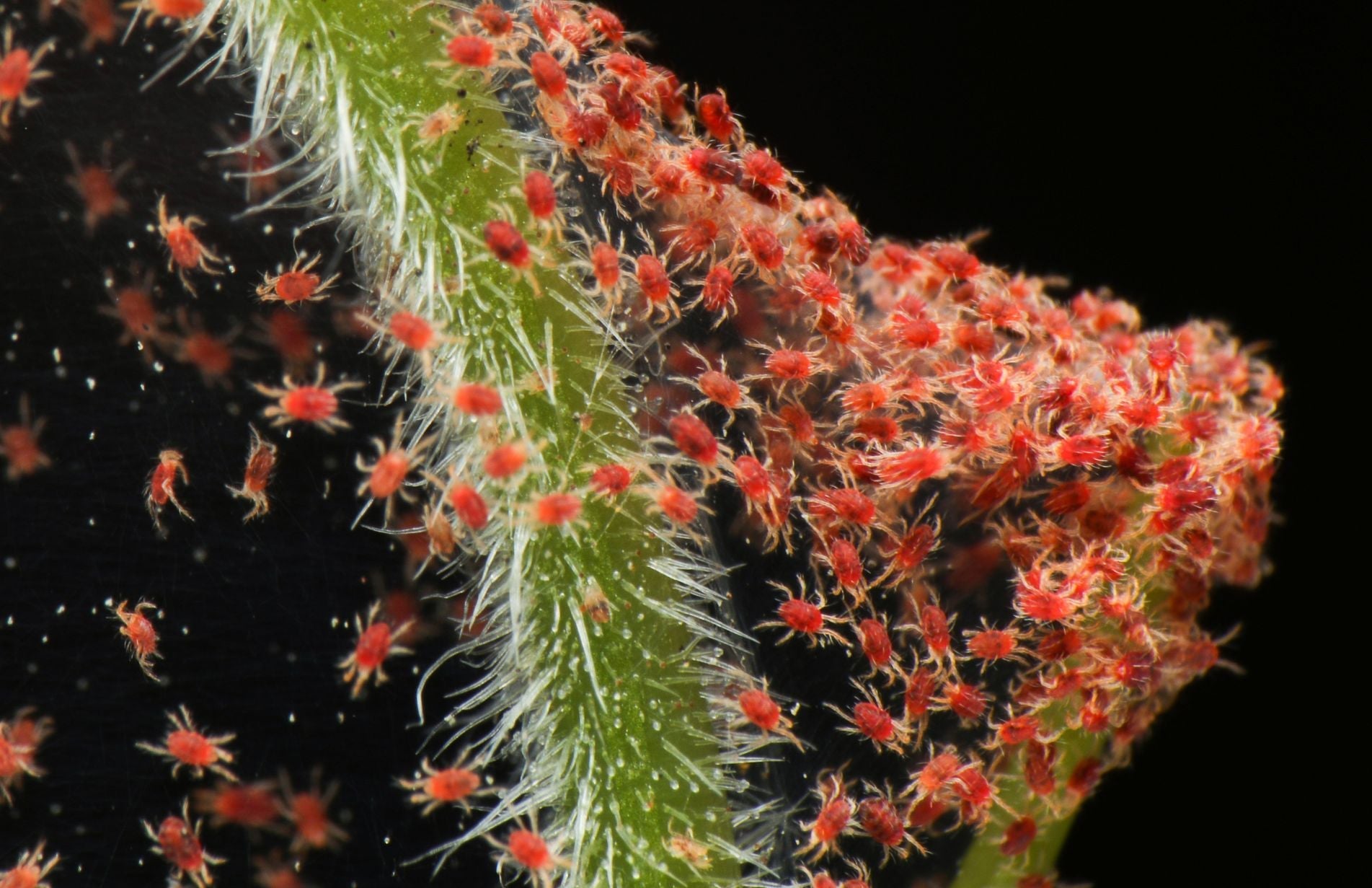Tea mite
a)Red spider mite
-
- Tiny and fast moving organism which is not easily observed with nacked
- 8 legs, bright red color, 2 spotes on body, elongate and
- Nymphs are flat—– , oval, yellow in color.
- Eggs are found on leaves or in cervices of young
- Close inspection will reveal that dust us actually moving infact is in fact the spider mite.
- Red spider mite will be all There are other kinds of spider mite such as two spotted spider mite, that are partially red.
- Most active in cool .

Management
- Lacewing and ladybug, predatory mite
- Insecticide soap and oil works
- Baby soap, shampoo +oil (2:2 tea spoon/lit)
- Careful not spray solution on plant when you notice beneficial insect as this will harm them as well and avoid spraying when the sun is directly on the leaves as it will likely dry up the
- Common way to control mite and other pest :
Combined one teaspoon cayenne pepper or hot sauce one quart of warm water, a few drops of liquid dish detergent. Let the solution sit overnight and then shift it through a fine stainer.
b) Scarlet mite ( Brevipalpus californicus: Acarina, Tennipalpidae) Host: tea, coffee, citrus.
- Tiny and fast growing organism.
- Not observed with backed eye.
- Deep orange to purple in color with 8 legs.
- Flat elongate and oval in shape.
- Egg are bright red and oval which sticky with ventral surface of leaf.
- Nymphs are flat body, oval in outline and scarlet in color.

Symptoms
- Feed leaves sap by scarping epidermis.
- Brown discoloration of leaves.
- Bark and leaf petiole of affected shoot turn brown and dry up.
c) Purple mite ( Calocarus carinatus, Acorina, Eriophyidae)
- Important pest of tea.
- Dark purple color with white stripe.

Symptoms
- Asam type of tea are more
- Feed upper surface of
- White powdery substance appear on infected parts of leaves which are the cast skin of purple mite.
Management
- Grow healthy crops with appropriate manure, fertilizer, irrigation, training and pruning
- Cut and burn infected parts of
- Sprinkler irrigation to dislodge the web made by
- Neem based pesticide such as: Altineem (3000 ppm), Azadiractin @ 8ml/lit
- Spray mineral oil (servo) @10-15 ml/lit as foliar Repeat after 7 days interval for 3 days.
- Spray Biomite or Ramban @ 66 ml/lit water as foliar spray. Repeat spray afer 7 days for 3 times.
d) White stem borer (Xylotrechus quadripes, Cerambycidae, Coleoptera)
Xylotrechus quadripes, X. semei, X. chlorophrus annulatus have present in Nepal. Among them X. quadripes are economically important insect of coffee.
Damaging stage: grub

Damaging symptoms: tunneling from root to hard wood, branch wilt and break easily.

Identification
- Egg: laid in cracks and cervices and under loose scaly bark of main stem and thick primary branches.
- Grub: white or yellow with anterior end broader and tapering towards the
- Pupa: inside stem of coffee.
- Adult: black, elongated beetle with gray pubescence on the head, thorax and White marking on elytra.
Management
- Provide optimum shade.
- Avoid injuries on stem and roots.
- Remove loose scaly bark of main stem, primarily using coir glove or coconut husk to remove cracks and cervices.
- NSKE 5% used frequently
- Spray Beauveria bassiana
- Predator: Apenesia spp.
e) Coffee berry borer (Hypothenemus hampei, Scolytidae, Coleoptera)
Damaging stage: grub
Damaging symptoms: small, round hole in Navel region of developed berry. Grub tunnel in berry, feed on bean and damage endosperm and tender berry drop.

Identification
- Egg: laying egg on tunnel
- Grub: brown gray color
- Pupa: inside berry
- Adult: Small, black beetle with sub cylindrical body covered with their hair.
Management
- Maintain shade and proper training of plants.
- Dry berries to the following MC%
- Parchment: 10%, Arabic cherry: 10.5%, Robusta cherry: 11%
- Spray Muscardian fungus, Beauveria bassiana
- Seed been transported after through disinfection.